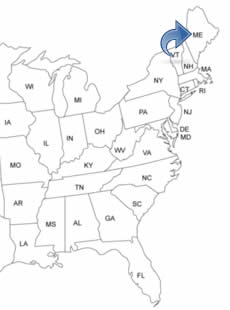MAINE PEOPLE SEARCH!
- ✔ Contact Info
- ✔ Phone Numbers
- ✔ Criminal Records
- ✔ Income Info
- ✔ Neighbors
- ✔ People's Age
- ✔ Property Ownership
- ✔ And Much More
Lewiston, Maine
Lewiston is located in the southern part and is the second largest city in the U.S. State of Maine. Lewiston offers a wide variety of things to do and see. The city has enjoyed national recognition for a wide range of initiatives. Including the 2007 All-America City designation and the 2006 City Livability designation. Lewiston has also got an identification by Inc. Magazine as one of the top 100 cities for Fastest, Most Sustained Growth.
To See And To Do In Lewiston
- Franco-American Heritage Center
- Museum L-A
- Bates College Museum of Art
- Atrium Art Gallery at Lewiston
- Captive Elements Art House
- The Parks in Lewiston
History Of Lewiston - Timeline
Around 1660, fur traders and English settlers in the area had "brought" infectious diseases to the Androscoggin tribe and many of them left the area. In 1690, the remaining families of the Androscoggin tribe were driven out of the area by the English.
In 1768 the Pejepscot Proprietors, a Boston-based land company gave away some land in the area to Jonathan Bagley and Moses Little of Newbury, Massachusetts. To get the land for free the conditions were that they should settle fifty families there and to build a road. The place was named Lewistown in honor of Job Lewis, a Boston merchant, and former Proprietor.
The first white people who permanently settled in Lewiston was Paul Hildreth and his family in 1770. Several families followed and in 1790 Lewiston's population was 532 persons. Most of them were farmers. In 1795, Lewiston was officially incorporated as a town.
In 1809, Michael Little built a large wooden sawmill next to the falls. That was the start of the industrial development in Lewiston. In 1836, Michael Little and other local entrepreneurs organized a company to build dams, canals, and mills. Later, in 1848, the company was given the name the Lewiston Water Power Company.
In 1849, a fire company was established. In 1850, Lewiston High School was established and the textile factory company "Bates Mill" was founded. In 1853, the railway was built. In 1855, The Maine State Seminary in Lewiston, now Bates College, was incorporated.
In 1863, Lewiston was incorporated as a city. The first newspaper, The Lewiston Evening Journal, was founded in 1866. In 1871, the original City Hall was built. The St. Peter's church was built in 1872. In 1877, the Music Hall was built on 69 Lisbon Street.
In 1881, the city had horse-drawn street cars. In 1888, the hospital "Central Maine Medical Center" was established. In 1890, a fire destroyed the original City Hall building. In 1892, the "new" Lewiston City Hall was built.
In 1900, nearly 24,000 people lived in the city. In 1902, Jordan School was built. In 1903, the First National Bank building, at 157-163 Main Street, was built. In 1914, the Manufacturer's National Bank was completed.
In 1959, the multi-purpose arena "Androscoggin Bank Colisée" was completed and in 1965, the heavyweight title rematch between Muhammad Ali and Sonny Liston was held in the arena. In 1966, the actor Patrick Dempsey was born in the city. In 1982, the four-story B. Peck & Co. department store in downtown closed after more than a century in business.

